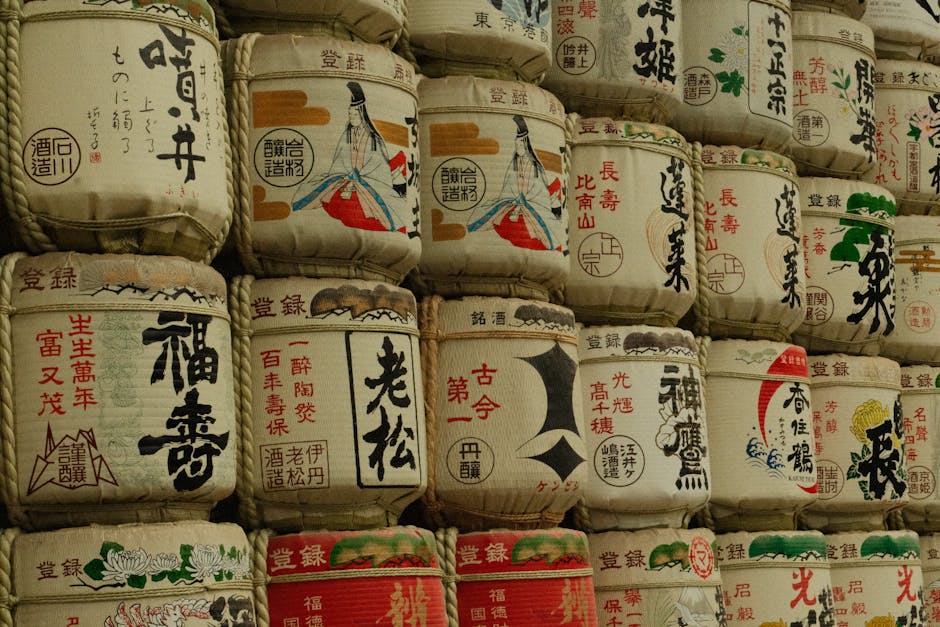
Japan is a treasure trove of exquisite traditional crafts, each bearing the weight of centuries of history and the dedication of countless artisans. Among these, Kyo-gawara, the distinctive roof tiles of Kyoto, stand out with their subtle sheen and profound cultural significance. These aren't just building materials; they are canvases of history, guardians of tradition, and now, symbols of innovation. Join us as we explore how these 1400-year-old traditional craft pieces are not only being preserved but are also dynamically adapting to modern life, engaging new generations, and captivating a global audience.
Kyo-gawara Techniques Shine at Osaka Expo, Transformed into Modern Tiles
The venerable techniques behind Kyo-gawara, a traditional craft famed for its subtle sheen, are set to make a remarkable appearance at the upcoming Osaka Expo. A project titled "Challenge! Expo" sees the intricate skills of Kyo-gawara artisans reimagined, specifically through collaboration with Kyoto Shoji, to transform these historic roofing materials into modern tiles. This initiative beautifully bridges the past with the future, showcasing how a craft deeply rooted in tradition can find new applications and expressions in a contemporary, global event. It’s a testament to the adaptability and enduring appeal of Japanese artisanry.
Asada Seigawara Kojo Pioneers Kyo-gawara's Future with New Gallery and Digital Collaboration
In an exciting development aimed at connecting the 1400 years of tradition of Kyo-gawara to the future, Asada Seigawara Kojo has embarked on a new challenge. The workshop celebrated the grand opening of its new attached gallery on September 25. More impressively, this initiative includes the full-scale launch of a co-creation project with the digital native generation. This forward-thinking approach by Asada Seigawara Kojo ensures that the rich heritage of Kyo-gawara is not just preserved, but actively evolves, inviting fresh perspectives and innovative ideas from younger generations who will carry the craft forward.
"LIFE ~Yume no Katachi~": A Human Documentary Celebrating Passionate Pursuits
Television continues to be a powerful medium for storytelling, and the human documentary program, "LIFE ~Yume no Katachi~", stands as a prime example. This show intimately follows individuals who are chasing dreams and pouring their passion into their endeavors. Narrated by the accomplished actor, Kuranosuke Sasaki, the program masterfully introduces these rich life stories. While not explicitly about Kyo-gawara, such programs play a vital role in celebrating the dedication and spirit that drive artisans and passionate individuals across Japan, echoing the commitment seen in traditional crafts.
"Gallery Kyo-gawara" Opens in Kyoto City, Offering Visitor Experiences
Further solidifying its commitment to sharing the beauty of its craft, Asada Seigawara Kojo, a prominent Kyo-gawara workshop in Kyoto City, Kyoto Prefecture, has proudly announced the opening of its workshop-attached "Gallery Kyo-gawara." This dedicated space offers a unique opportunity for visitors to immerse themselves in the world of Kyo-gawara. To enhance the experience, visitor benefits have been prepared, inviting both locals and tourists to discover the intricate details and historical significance of these remarkable tiles firsthand. It's a direct invitation to connect with a living tradition.
Fushimi Ward Gallery Caters to Tourists, Preserving Kyo-gawara Methods
In Fushimi Ward, Kyoto City, a Kyo-gawara workshop has opened a new sales gallery, ingeniously designed to cater to inbound tourists targeting "Shoki-san" figures. These distinctive guardian figures, often made from Kyo-gawara, are a popular cultural artifact, and the gallery provides an accessible point for international visitors to appreciate and acquire them. This strategic move not only helps in the passing down of manufacturing methods by ensuring economic viability but also positions Kyo-gawara as a vibrant part of Japan's cultural tourism landscape. It's a clever way to utilize global interest to sustain local heritage.
The journey of Kyo-gawara, from ancient rooftops to innovative modern tiles and engaging gallery experiences, is a vibrant narrative of tradition meeting the future. Artisans like those at Asada Seigawara Kojo are not merely preserving a craft; they are breathing new life into it, ensuring its legacy for generations to come. Through collaborations, digital engagement, and welcoming galleries, Kyo-gawara continues to tell its 1400-year-old story, proving that true artistry transcends time and continually finds its place in our evolving world.
Comments
Post a Comment